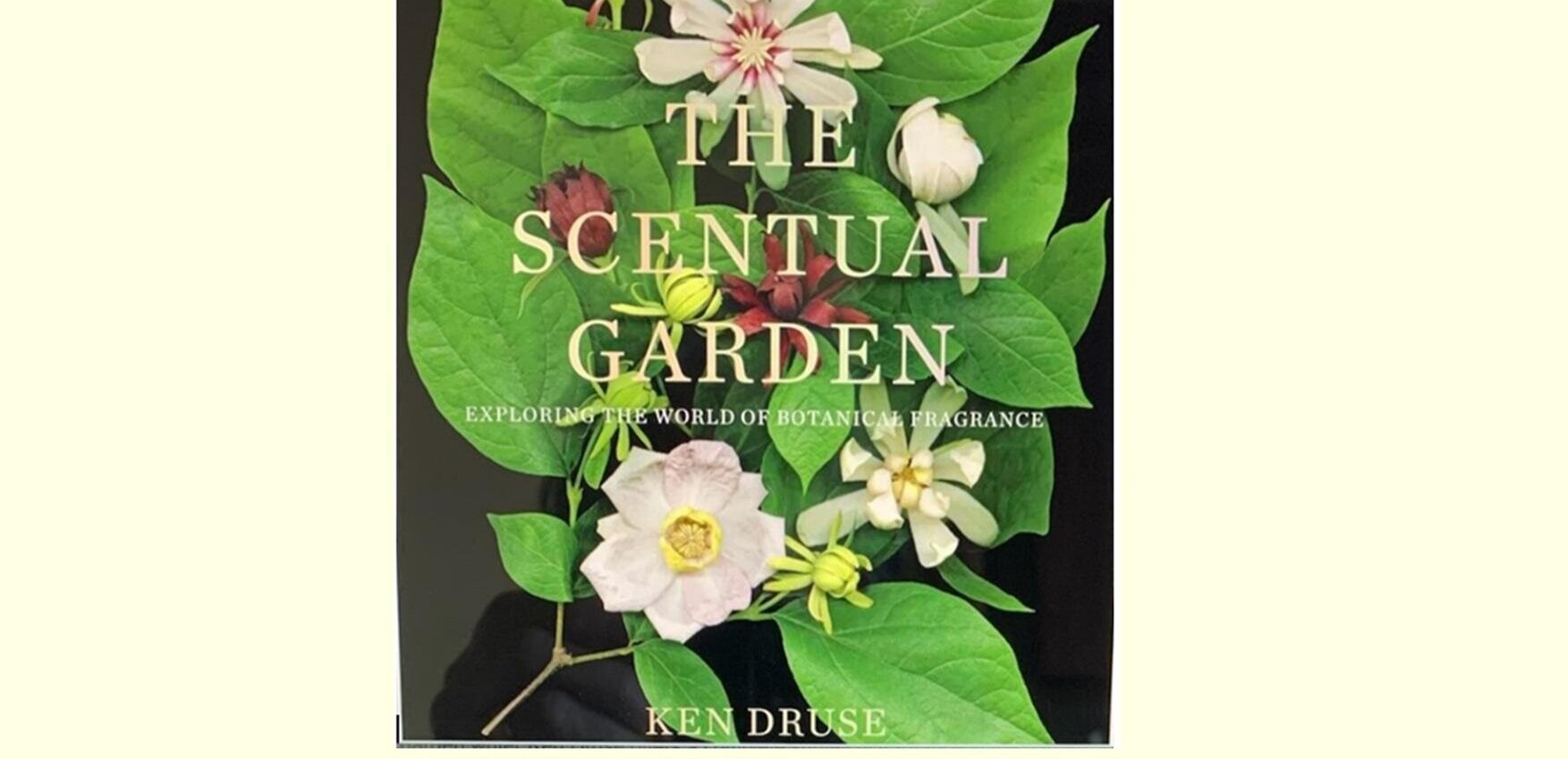
The Scentual Garden: Exploring the World of Botanical Fragrance , by Ken Druse Published October 2019
This recent publication is written by a popular garden writer who has created a complete survey of garden fragrances. The author’s goal was to create a detailed compendium of flower fragrances, first by providing a primary scent for each plant he describes and then providing a list of secondary scents.
For example, for the plant Mountain Mint he describes the primary scent as strong menthol, but mentions additional secondary scents including clear, clean and stimulating. The primary scent is used to create twelve categories of scent families: animalic, balsamic/resinous, floral/sweet, forest, fruity, heavy, herbal/green, honey, and Indolic. Indolic includes several smells that are revealed by the intensity of the whiff or sniff you take. For instance, an intense whiff may smell like something decomposing whereas a delicate sniff may result in a scent perceived as flowery, medicinal, rose and/or spice. Indolic may also smell like mothballs.
The first section of the book covers a variety of topics.
In it, the author explains that plant fragrances come from volatile organic compounds in plant oil glands. When the chemicals evaporate, molecules are released into the air, and although these are in minuscule amounts, they are readily perceived by the human olfactory organs. Druse states that plant fragrances trigger remembrance of past things, perhaps, because the olfactory bulb (at the base of the front of the brain) relays the scent to the limbic system. The limbic system generates emotions and is where memories are stored.
The author explains that plants are fragrant not just for humans, but also to repel herbivores and insects and to attract pollinators. A Moonflower releases perfumes at night because it is pollinated by nocturnal bees and wasps. Other pollinators search for flowers we might consider sickly sweet, bleachy or fishy. Druse gives examples of plants that are no longer bred for fragrance. For instance, long-stem roses are prized for their large blooms and long stems, while most modern sweet peas are prized for the flower size and color rather than fragrance.
Another subject in this section provides a short lesson on how to smell flowers when strolling your garden: (1) Take short quick sniffs. This keeps the fragrance fresh with little bursts of molecules. (2) Close your eyes and concentrate on the flower. (3) Do not wear strong scents or carry strong-scented drinks, chewing gum, etc. while smelling flowers.
Druse also gives a history of how humans used and distilled scents from fragrant plants starting with the ancient Egyptians, the Romans and the Greeks. He explains the techniques to obtain scents through such processes as maceration, decoction, cold pressing, carbon dioxide extraction and using organic solvents.
In another part of the first section, the author describes how to cut flowers and care for them, including how to make your own preservative.
The second section of the book describes the scents included in each of Druse’s twelve primary scent categories and provides an encyclopedia of fragrant plants by category. Both familiar and unusual plants are included in the volume. There are incredibly clear and beautiful photographs of the plants discussed photographed by Ellen Hoverkamp and by the author. Druse also provides short stories, histories, and facts about the plants. For instance, he relates the story that bayberry was gathered by American colonists to make a blue dye and boiled to obtained wax for candles. He also explains that the tree Franklinia Alatamaha was discovered along the Altamaha River in Georgia by William Bartram and was named for Ben Franklin.
I read this book during the COVID-19 isolation period this spring as an electronic book. After perusing over half of the book, I realized how much better it would have been to take my time to read a paper book to flip pages back and forth, to look up particular fragrant plants, to check the scent of a plant in my garden and compare it to the author’s fragrance descriptions, to note the special stories for specific plants, or to compare photographs of different plants. None of that is easy with an e-book.
So, I suggest purchasing this book if you are really interested in fragrant plants. This book is beautiful and a truly amazing research compendium.
Reviewed by Holly Sparrow, Headwaters Master Gardener